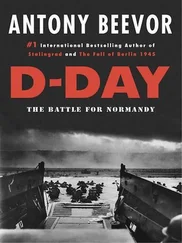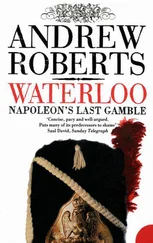1 ...6 7 8 10 11 12 ...27 Hougoumont was situated some 500 yards in front of Wellington’s line along the crest of the ridge, meaning that it could disrupt any general French advance. Reille’s assault at roughly 11.30 a.m. was only intended as a diversion, with the hope that Wellington would have to weaken his line by sending in reserves to reinforce the heavily-pressed farmhouse. Not only did this not happen, but the very reverse became the case: it was the French who steadily poured more and more troops into the effort to take Hougoumont, which continued throughout the day. A serious attempt to take the farmhouse would have required heavy artillery fire against the gate and walls, which for some reason was not employed. Napoleon never rode over towards Hougoumont during the course of the battle; had he done so he would immediately have spotted the vast numbers of Jérôme’s troops that were being committed to the struggle to capture the château. The generally stationary position he adopted, in great contrast to Wellington’s highly peripatetic approach to command, worked against the Emperor.
The siege was only finally raised when the rest of the French army had been repulsed from the slopes of Mont St Jean, and the defence by a collection of Coldstream Guards, 3rd Foot (later Scots) Guards, 900 Nassauers, a Brunswick battalion and two companies of the 1st (later Grenadier) Guards was heroic. It is estimated that the 2,600 Anglo-Allied troops at Hougoumont occupied the attentions of 12,700 Frenchmen for much of this vital ‘battle within a battle’.
At one point a detachment of thirty French troops from the 1st Light Infantry managed to enter the farmhouse, led by a huge Frenchman nicknamed ‘I’Enforceur who was armed with an axe, but Lieutenant-Colonel James Macdonnell, along with nine others including Corporals James and Joseph Graham of the Coldstream Guards, managed to close the gate again and the Frenchmen were all massacred save for a fourteen-year-old drummer boy. When many years later a bequest was made in a vicar’s will ‘to the bravest man in the British army at Waterloo’, Wellington — who was asked to nominate the beneficiary — stated that ‘the success of the battle turned upon closing the gates at Hougoumont’, and so Corporal James Graham, by then a sergeant, was tracked down with the help of Macdonnell and awarded the money.
Cotton recorded how some time after the gates had been closed, Graham had
asked permission to fall out for a few minutes, a request which surprised Colonel Macdonnell, and induced him to inquire the motive. Graham replied that his brother was lying in the buildings wounded, and, as the flames were then fast extending, he wished to remove him to a place of safety. The request was granted, and Graham, having rescued his brother from the fate which menaced him, speedily returned to his post. 5
(James Graham died an inmate of the Royal Hospital, Kilmainham, in 1845.)
If the gates had been forced open for long enough there can be little doubt that all those caught inside the perimeter would have been killed. Of all the emotionally moving places on today’s battlefield — at least for a Briton — Hougoumont is the most powerfully evocative, with its wall plaques, gravestones, chapel and the loopholes in the walls through which the Guards wreaked such havoc on the French attacking through the adjacent wood. Byron etched his name on the walls when he visited the following year. (When visiting it is important to remember that the walls of the farmhouse were higher in 1815 than they are today.)
Hougoumont’s defenders were aided by Wellington’s order to Captain Robert Bull to fire howitzers at the wood from which the French, having taken it expensively from the Nassau and Hanoverian infantry, were beginning to emerge. The slaughter outside the walls as the French tried unsuccessfully to scale them was appalling. Later in the day howitzers were deployed by the French, which set fire to the château itself and to other outbuildings, but the Guards continued defending the walled garden and were never dislodged from it. Many are the tales of valour from Hougoumont, on both sides, and the story of its defence is not unlike that of Rorke’s Drift in the Zulu War.
A message that Wellington sent Macdonnell during the assault illustrates the desperation of the situation once the French howitzers had done their job:
I can see that the fire has communicated from the hay stack to the roof of the chateau. You must however still keep your men in those parts to which the fire does not reach. Take care that no men are lost by the falling in of the roof, or floors: after they will have fallen in occupy the ruined walls inside of the garden; particularly if it should be possible for the enemy to pass through the embers in the inside of the house. 6
The fighting at Hougoumont sucked in more and more French troops throughout the day. ‘No troops but the British could have held Hougoumont, and only the best of them at that,’ was Wellington’s encomium to the defenders. After the battle, in the hearing of Ensign Gronow, Major-General Peregrine Maitland told Lord Saltoun, whose 1st Foot Guards had held the orchard of Hougoumont: ‘Your defence saved the army: nothing could be more gallant. Every man of you deserves promotion.’ Saltoun replied that it had been ‘touch and go — a matter of life and death — for all within the walls had sworn that they would never surrender’. Saltoun’s adjutant added, ‘Our officers were determined never to yield, and the men were resolved to stand by them to the last.’ 7
The attacks on Hougoumont continued at various levels of intensity for over eight hours, but at about 1.30 p.m. a second phase of the battle opened up when, after a bombardment by the French artillery, General d’Erlon was given his second opportunity to affect the course of the campaign.
* The practice of dividing Waterloo into five distinct but overlapping phases was begun by Sir James Shaw Kennedy, who took part in the battle, has been followed by later historians such as Captain A.F. Becke, Sir John Keegan, Elizabeth Longford and Ian Fletcher, and is still easily the best way of making sense of it.
2
The Second Phase
MUCH OF THE ART of warfare in the Napoleonic era depended not on the technology of weaponry, which had altered very little since the wars of Marlborough, but upon the skilled interaction of the three main military elements of the day: cavalry, infantry and artillery. When these were deployed in a coordinated way, complementing and supporting each other in attack and anchoring each other in defence, they could be a formidable, indeed campaign-winning juggernaut. Yet time and again in the battle of Waterloo the French strategists, by which must principally be meant Napoleon, his chief of staff Marshal Soult and his battlefield commander Marshal Ney, failed to employ the three arms to their best advantage.
Each of the three arms had its own strengths and weaknesses in terms of manoeuvrability, firepower and offensive potential. A regiment of infantry that had formed itself into a square was almost impregnable to a conventional cavalry charge, but highly vulnerable to an artillery bombardment or the volleying of another infantry unit formed in line, while cavalry charging cannon could do so in a quarter of the time that infantry could, with consequently fewer losses. Artillery meanwhile employed different kinds of shot for different tasks. The key in a fastchanging battle was to deploy each arm in such a way as to play to its strengths and to support the achievements of the other two. This simply did not happen much on the French side at Waterloo, but was a crucial factor in Wellington’s flexible defence.
Napoleon hoped that after half an hour of cannonading his Grand Battery would have so weakened the Anglo-Allied left-centre that a frontal assault by d’Erlon’s corps marching in column would be able to punch a hole in Wellington’s line. Yet because, in part, of Wellington’s technique of deploying his men behind the crest of the slopes, sometimes even lying down, the death toll amongst the Anglo-Allied infantry was nothing like what it had been for the more visible Prussian troops at Ligny.
Читать дальше
Конец ознакомительного отрывка
Купить книгу











